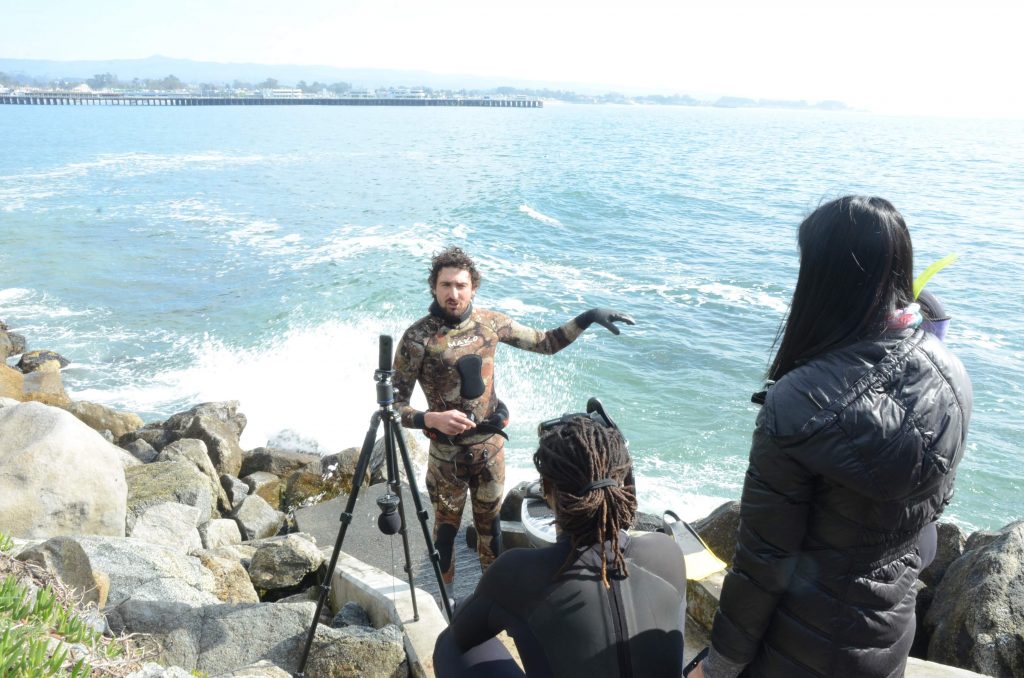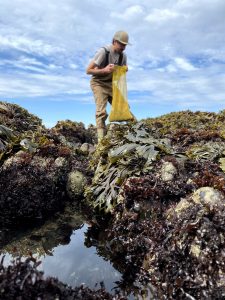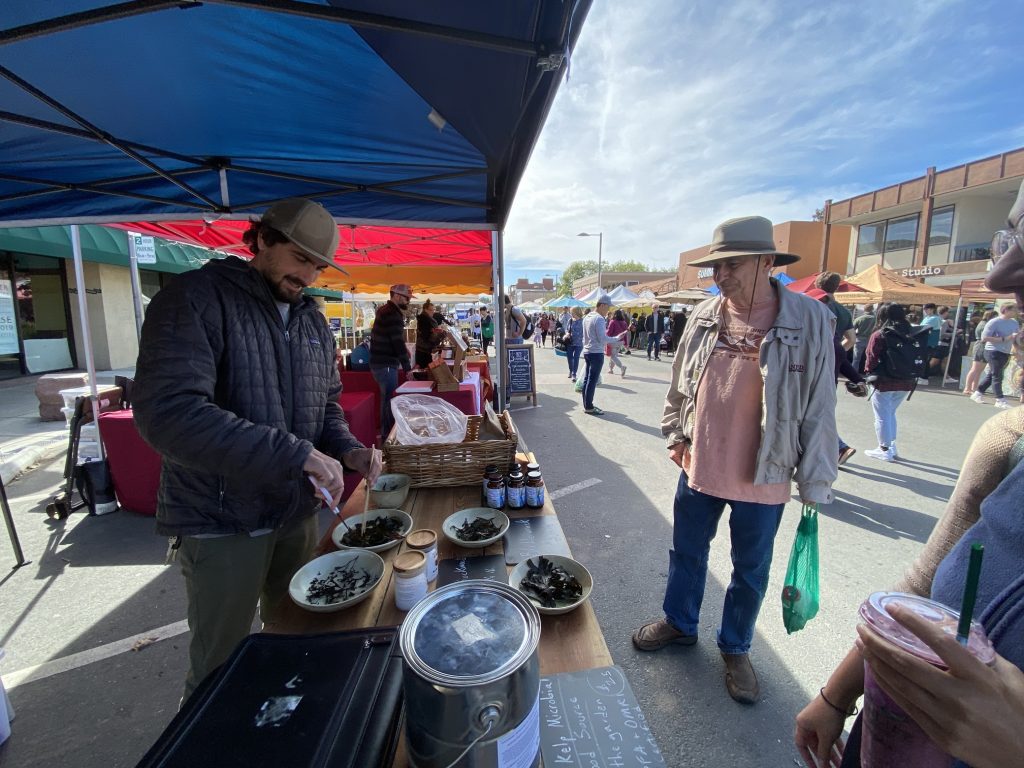It was a bright, sunny day at Lighthouse Point in Santa Cruz. The waves were constant, the tide was high, and the swell was steady.
A small group of students from Stanford University gathered at the foot of a staircase, snorkel masks and fins in tow, as they prepared for a free dive tour of the kelp forest with local kelp harvester Ian O’Hollaren.
No stranger to the ocean and all its might, O’Hollaren announced a few safety precautions before leading the group into the water.
“So it’s a bit high tide today, but we’re going to go out through these stairs right here, paddle out to the kelp forest so just be careful as you’re walking down. It’s a little slippery and watch out for sneaker waves all the time,” O’Hallaren said. “The ocean is unpredictable so we just want to be real cautious and aware of our surroundings every time we’re in the water.”
O’Hollaren is the founder of Seaquoia, a local brand he created to share his love of the ocean and natural products. For the last five years, he has harvested and sold marine products at local Bay Area farmers markets.

His mission is clear: to share his knowledge of California kelp, an abundant and resilient resource, and to create seaweed-based products that are beneficial for humans, livestock and agriculture.
Kelp, a type of brown algae, grows in the cold waters along the Pacific coast from Baja to British Columbia. Monterey Bay is dominated by two of the world’s largest kelp species — giant kelp Marcrocystis pyrifera and bull kelp Nerecystis leutkeana. These species thrive due to the effects of regional coastal upwelling, which brings cool, nutrient-rich water from the bottom of the ocean to the surface. Dense patches of kelp forest create a three-dimensional landscape of columns that are home to diverse array species, from charismatic seals and otters to fish and invertebrates.
In addition to its role in providing habitat and food in the ecosystem, the giant kelp forest reduces coastal erosion and sequesters carbon.

Photo credit: Tylar Campbell
Although it’s unclear how climate change will impact kelp species in the long term, other threats like pollution and deforestation by exploding urchin populations are already negatively impacting bull kelp in Northern California.
Monterey Bay incubates rich biodiversity by acting as a sanctuary for intertidal species.
As a small-batch harvester, O’Hollaren is part of an important process to help the new sporophytes and plants pop up.
Read more on Medium: Crafting a 360 story of seaweed and kelp forests
“Either way, they’re naturally going to grow out and break off, get too heavy and rip off the holdfast and the plant will die,” he said.
By harvesting only the mature plants, he is able to sustainably support the growth of the seaweed.
However, The California Department of Fish and Wildlife regulates harvesting by issuing licenses. Commercial harvesters like O’Hollaren can harvest up to two wet tons (4,000 pounds) in a season, while recreational harvesters can only collect up to ten wet pounds. O’Hollaren is careful to note that if everyone went out and harvested, especially without proper licensing, those intertidal areas would face significant problems.
O’Hollaren is especially passionate about reintroducing seaweed into society as “a new local food source that we can not only consume, but use in many different industries.”
After spending time gathering fresh local kelp from the ocean and the intertidal areas, he takes his harvest to the kitchen where he prepares them for local markets and restaurants. His products are dehydrated to preserve flavor and nutrients similar to a seaweed chip. He then packages them for distribution.

Photo credit: Tylar Campbell
O’Hollaren speaks of the benefits of giant kelp and seaweed in the diet.
” … with all the iodine deficiencies worldwide, now that it has caught a lot of people’s interest and because it’s so rich in iodine. So then you get all the macro minerals; trace minerals; and even some B12 in seaweed.”
Although the market may seem niche, the demand for local and fresh products like kelp and seaweed continue to gain popularity among today’s healthy food market consumers.
